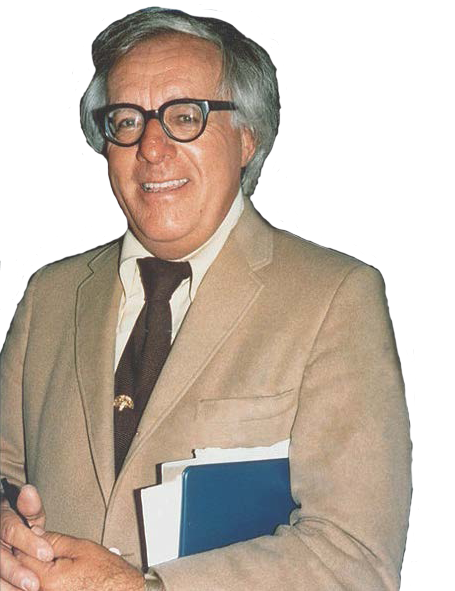Ray Bradbury looked for a way to “live forever.” Explore his writing and other more surprising influences on our history and daily lives to decide for yourself if he achieved his goal.
“There is so much joy and poetry in Mr. Bradbury’s stories, joy for the universe, the love of language. Whether time is being altered through the crushing of a butterfly or an astronaut is burning up as he enters the atmosphere so as to become our shooting star, even here in these dark moments there is somehow joy. It is irresistible.”
Ray Bradbury’s early life was filled with both magic and heartbreak. Ray loved fantasy authors such as Jules Verne and Edgar Allan Poe, as well as movies and carnival magic.
Ray also understood the finality of death. His grandfather and sister passed away when he was young. Ray’s early experiences with death led him to escape deeper into magic and fantasy. He also looked for a way to “Live Forever”: a phrase that is often found in his writing.
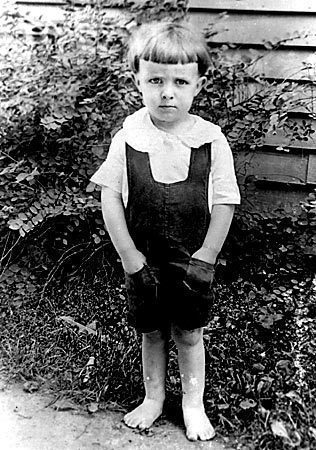
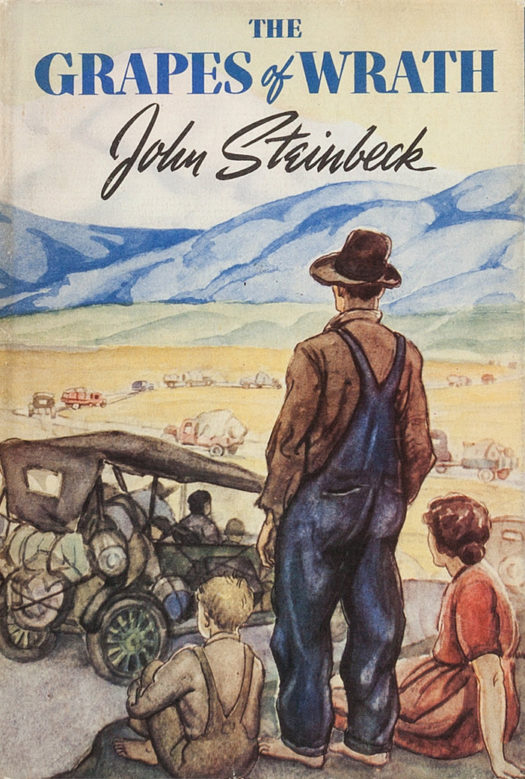
Ray had many literary influences, including Edgar Allan Poe and Jules Verne. He particularly loved The Grapes of Wrath by John Steinbeck.
Ray met Steinbeck in a hotel lobby in California when he was a young man, and introduced himself as a fan. He was too tongue-tied and nervous to introduce himself as a fellow writer!
“Ray Bradbury’s most significant contribution to our culture is showing us that the imagination has no foreseeable boundaries.”
Ray Bradbury began writing science fiction at a young age. He worked as a newspaper salesman in his 20’s, and wrote short stories in his spare time.
Futuria Fantasia (1939-1940)
Ray Bradbury began publishing this fanzine when he was 18 years old. There were four issues that featured many soon-to-be famous science fiction writers. This cover is from Volume 1, Issue 1 and was illustrated by Hannes Bok, who would later become a renowned science fiction pulp illustrator.
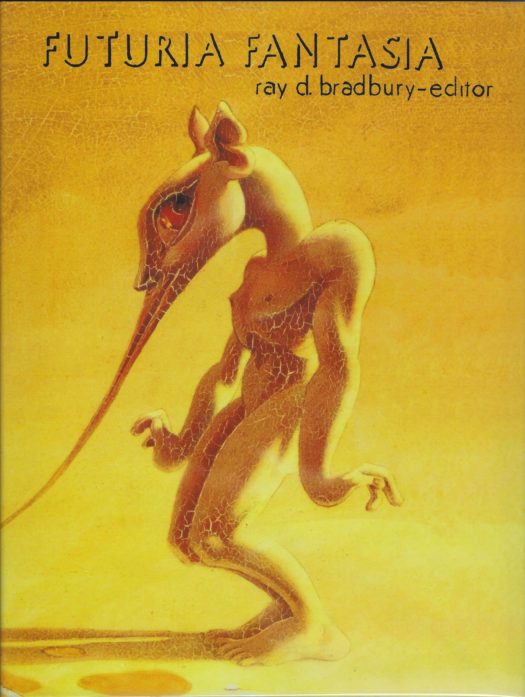
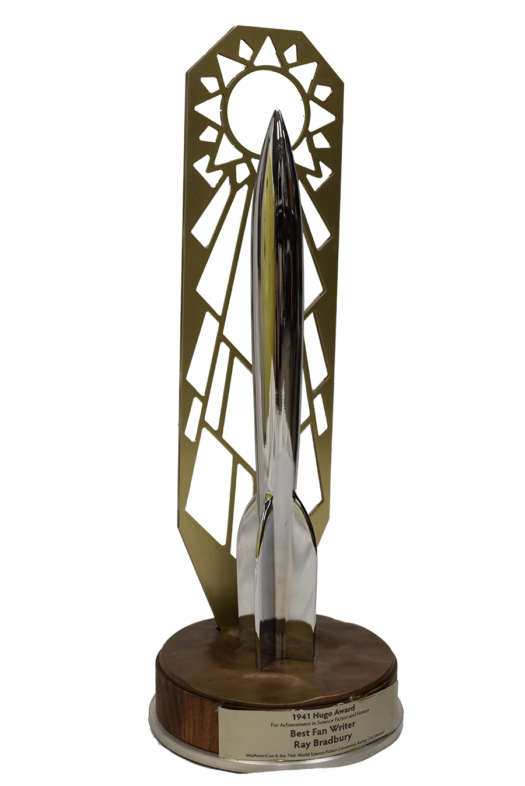
1941 Retrospective Hugo Award for Best Fan Writer
From the collection of the Center for Ray Bradbury Studies at Indiana University School of Liberal Arts
Futuria Fantasia won a Retro-Hugo award in 2016 for Best Fan Writer of 1940. The Hugo Awards are among the most important awards in science fiction. They were not held until 1953, and skipped 1954, which is why Ray did not receive any Hugo Awards that were not retrospective.
Saturday Evening Post, June 1951
In 1951, Ray wrote a story called “The Beast From 20,000 Fathoms” in the Saturday Evening Post. Movie director John Huston loved the story and asked Bradbury to write a screenplay for Moby-Dick. This launched Ray into fame and onto his journey to live forever.
What country’s space program (other than the United States) did Ray Bradbury have an influence on?
Get the AnswerRussia!
At the height of the Space Race, tensions soared between the United States and the Soviet Union.
Neither side wanted to back down in their pursuit of putting the first person on the Moon. But both sides shared their admiration of the future of space travel Ray Bradbury envisioned in his science fiction.
The plaque above was awarded to Ray “for the remarkable input in the field of peace, harmony and prosperity of the mankind.”
“Ray challenges the imagination—indeed all the senses—in the simplest way of all—by finding the inner truths about humanity.”
Ray Bradbury not only inspired astronauts, he helped others bring outer space down to earth. One of the visionary people he inspired was Walt Disney.
Ray Bradbury and Walt Disney were friends for many years and together they created magical, lasting worlds. Ray’s influence is seen in Spaceship Earth at Walt Disney World’s Epcot, the Halloween Tree at Disneyland, and Orbitron and Phantom Manor at Disneyland Paris.
Ray Bradbury had a particularly unexpected influence on the design of Orbitron, a ride at Disneyland Paris.
He was asked to help make the ride seem faster. His solution was simple— spin the planets the opposite direction the riders are moving!
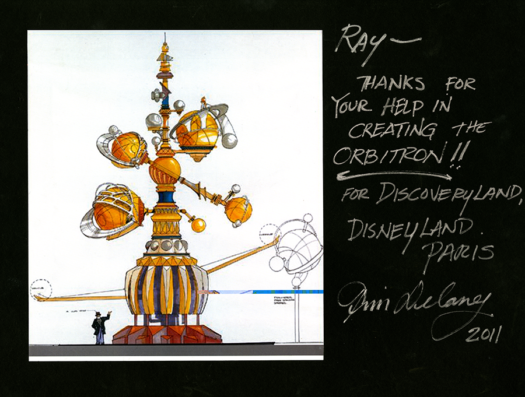
Ray’s favorite holiday was always Halloween. Inspired by his love of magic when he was a child, he would have fantastical Halloween parties and always wear a costume. The Halloween Tree was written in 1972, and later turned into an animated short film that Ray wrote the screenplay for.

Ray Bradbury won an Emmy award for his screenplay The Halloween Tree. He adapted the story from his 1972 novel with the same name.

Ray Bradbury returned to the story of The Halloween Tree multiple times. Seen here as an orange and black tree with jack-o-lanterns hanging from the branches, it seems to have captured his imagination.
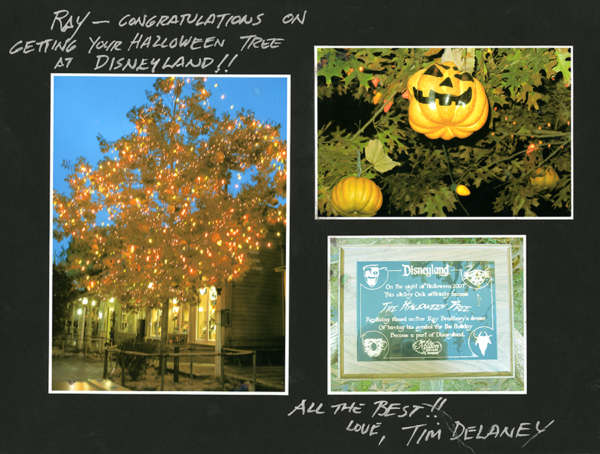
In 2007, Bradbury was immortalized at Disneyland as part of their yearly Halloween decor. The thank you note above shows the tree and some of the ornaments.

“[Ray’s] gift of provocative thought on the human condition through the medium of science fiction stands as a beacon of light for writers of the genre. No wonder Gene Roddenberry held him in such high regard…and named a Starship the USS Bradbury in his honor.”
People and their motivations were always at the heart of Ray Bradbury’s work. He often chose to set aside hard science in favor of more fantastical elements that would showcase human nature. The Martian Chronicles and The Illustrated Man are both examples of this.
Ray wrote at a small wooden desk on a manual typewriter for many years. It is appropriate given the human elements of his story that when he got a bigger desk, he still used the smaller desk to hold unfinished paintings.
1947 Royal KMM Typewriter
From the collection of Steve Soboroff
Ray loved to do things the old-fashioned way. He never learned to drive a car, instead preferring to get around by bike or roller blades. He also preferred to do his writing on typewriters.
This typewriter is one of many that Ray owned throughout his writing career. He probably wrote much of The Illustrated Man using this machine.
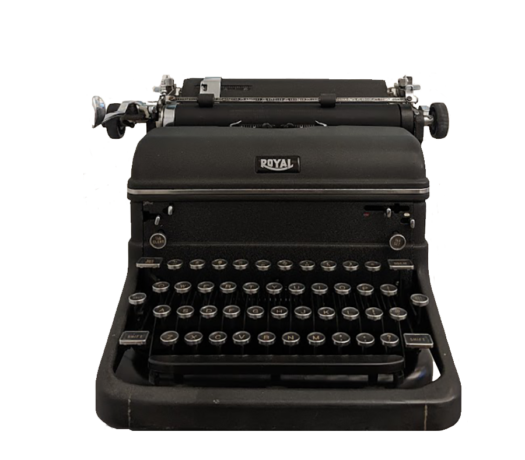
One of the letters that Ray received in 2003 was of particular significance. It was from Thomas Steinbeck, the son of Ray’s childhood literary hero John Steinbeck.
In the letter, Thomas told Ray that the entire family had been fans of him for years. John would read to the children, and would often choose Ray’s stories. This in turn inspired Thomas to become a writer when he got older. It is amazing that Ray inspired the son of a writer that inspired him so much, and shows the enduring legacy of his writing and personality.
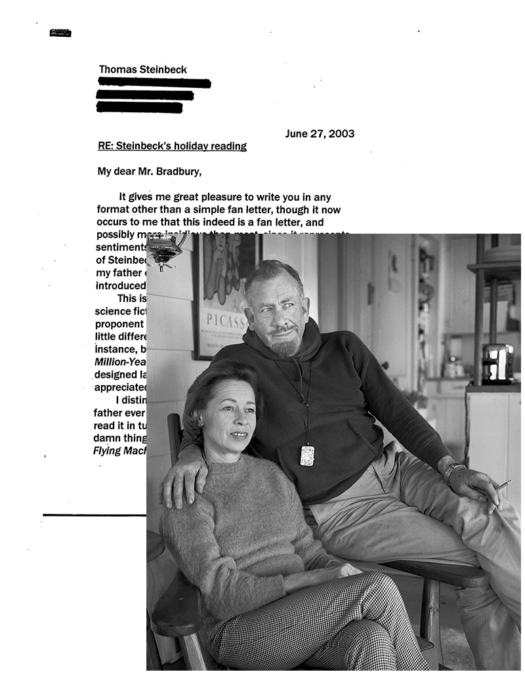
Ray Bradbury led an interesting life. His influence was seen across American culture, not just in writing. But has he achieved immortality?
The overwhelming number of currently active writers inspired by Ray would indicate yes. Writers like Stephen King, Barack Obama, R.L. Stine, Neil DeGrasse Tyson, and countless others continue the legacy of Ray Bradbury. His spark remains alive, and will continue to burn across the pages of time for years to come.
